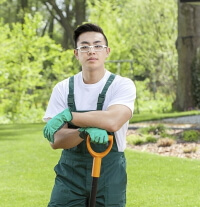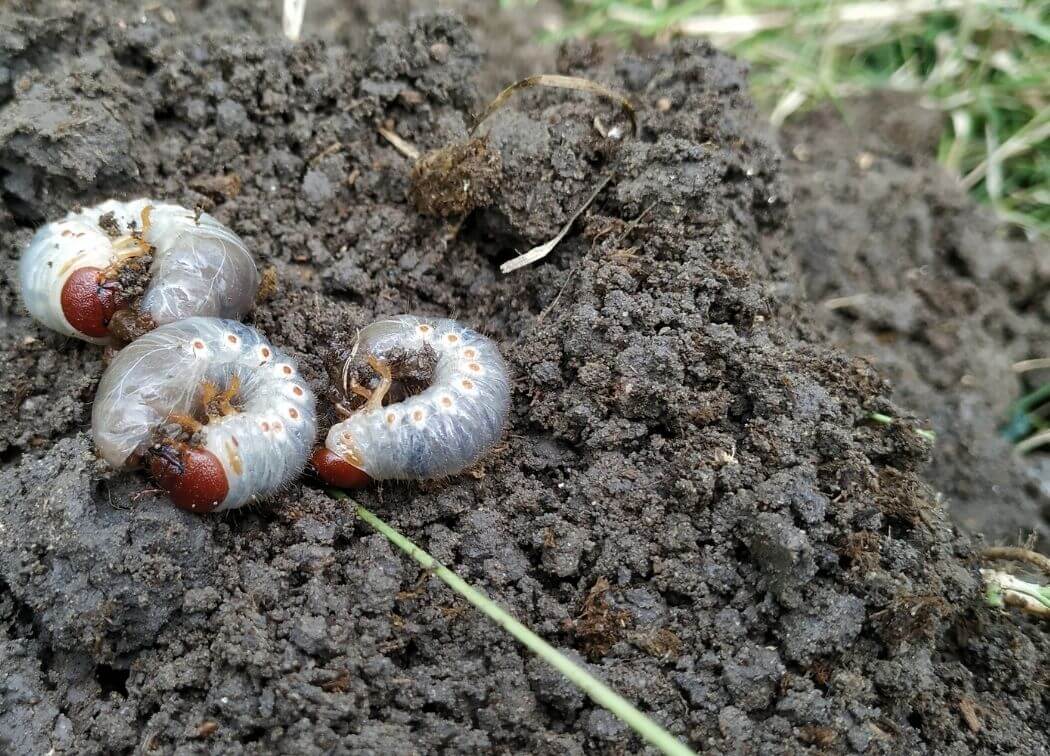If you want to control grubs properly, TIMING is KEY. You should ALWAYS stay aligned to their life cycle.
The best time to apply grub control is during the early spring to late summer when there’s INCREASED grub worm activity in your lawn. Grub preventers are best used between June to July before grubs hatch. Grub killers are best applied during the spring when grass damage is evident on your lawn!
Grubs can be one of the most persistent causes of lawn damage, especially if they are left free to eat all the green grass in your yard. But don’t worry!
We compiled all the information you need on when to apply grub control to maximize the best results. Continue reading this article to find out!
What Is the Best Time to Apply Grub Control?
The goal of applying grub control is to prevent damage to your lawn and prevent grubs from doing the same thing the following season.
Generally, the best time to apply grub control depends on your purpose. Are you killing grubs that are already damaging your lawn, or are you preventing grubs from hatching?
The BEST time for killing grubs would be between early spring and late summer because heightened grub activity would usually occur during these months.
If you want some preventative grub control, it’s best to start in June or July. This is when grubs are about to hatch.
Why Do I Need Grub Treatment or Prevention?
To understand why we have to take control of the grub situation, we must first comprehend the reason behind it.
Grubworms, or grubs for short, are known to be infestations in your lawn grass. Some examples are June bugs, billbugs, and European chafers.
As soon as they hatch, they start eating the grass roots throughout the warm months. This can result in massive damage to your lawn if left untreated.
Not to mention that they also lay their eggs in your gardens, which means more grubs to control for the next season.
And this destructive cycle can go on and on until some visible damage from grubs can be seen. One severe sign is when you can pull back the grass of your lawn like a loose carpet.
You will start noticing some dead patches of grass from early spring until mid-summer. The damage will only stop when the grubs develop into pupae and become adults.
This is why it’s so important to take action against grubs, regardless of whether you are treating or preventing them.
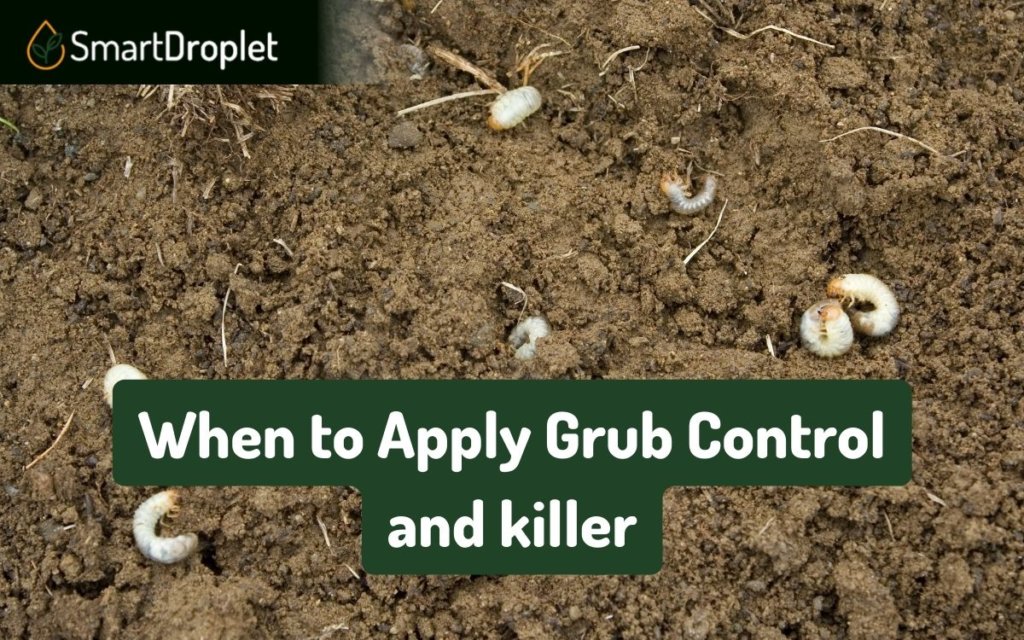
When Do I Apply Grub Control?
To know the best time to apply grub control, we must also remember when TO NOT APPLY it. This would depend on whether you are preventing or controlling grubs.
The right timing will provide about 80% of grub control, the target percentage.
Grub Prevention
Do not apply grub control when it’s early spring.
That’s because the grubs hatch between July and August, which means applying in early spring would not be effective.
The pesticide will only be absorbed into the soil but lose its potency once the grubs hatch. That would be a waste of pesticide since it would only affect the soil.
You must apply pesticides or insecticides while the eggs are hatching because this is also when young grubs are present in the soil.
Grub Control
If you notice visible damage, the best time to apply grub pesticides immediately. Don’t forget to follow the right application guidelines on the label.
However, when applying grub killers, remember that they SHOULD NOT be applied during fall.
There is a reason they should be applied in the early summer; that’s because grubs dig around 4-8 inches into the soil during early fall to hibernate.
This means that applying grub killer or grub preventers would be futile as they would only come up when the soil warms again.
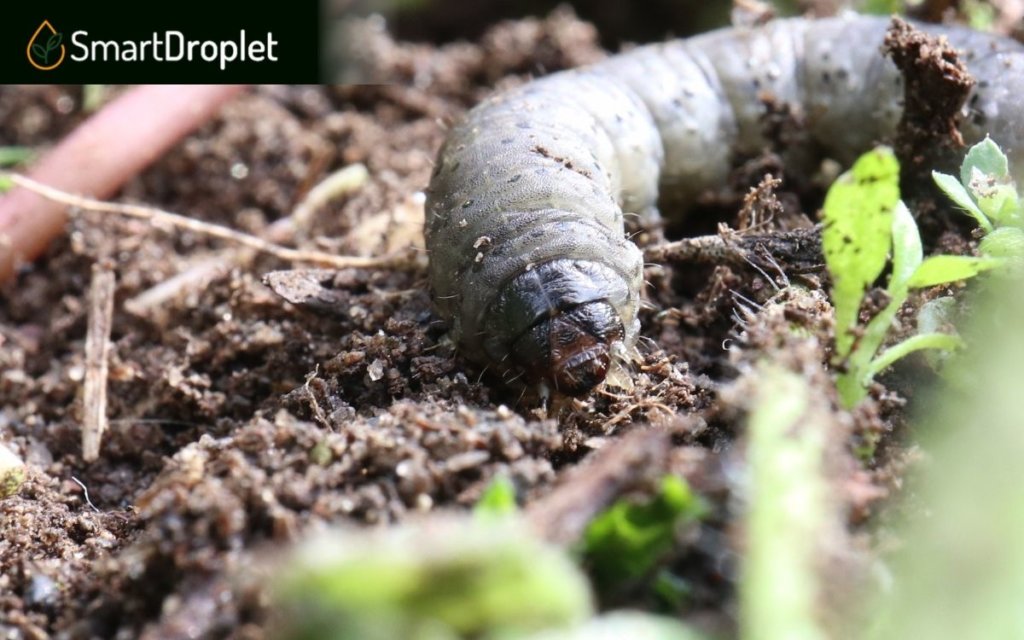
How to Maximize Pesticide Application
Applying grub killer would need proper aftercare to maximize its effects and ensure that the grub worms will be killed.
We advise you to water your lawn immediately after using a grub killer. This is because most grub control pesticides are in the form of granules.
Water your lawn to at least an inch, so the pesticide will really seep into the soil and kill the grub worms.
Of course, the work doesn’t end once you put down grub control. After that, you have to monitor the lawn too.
Lawn grubs should start lessening, which means that grub damage to your grass and grass roots must be lessened too.
Expect eradication of the grubs within a week. If you still see dead patches of grass in your turf, the pesticide may not have reached the root zone.
This goes for preventative grub control, too. If you can still find new grubs in your lawn causing grub damage, then the insecticide did not penetrate the soil enough.
How Frequent Should I Apply Grub Killer?
The frequency of your application of your grub killer depends on the severity of grub damage. Do you see a lot of dead patches of dead grass in your turf?
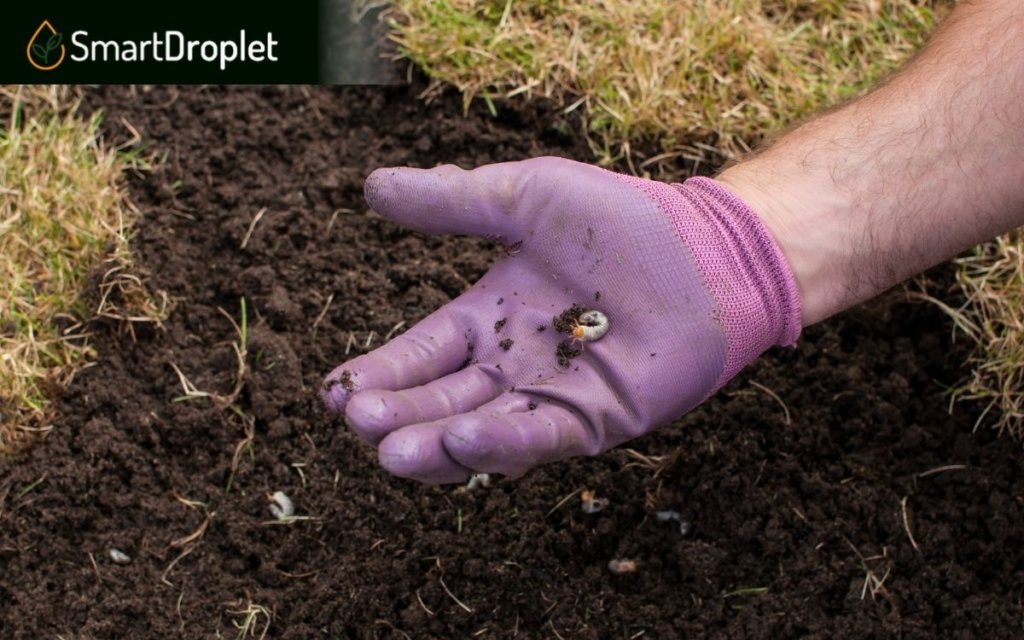
Well, let us give you a secret. Healthy turfs can support around five grubs per square foot without visible damage.
This means that if you can already see visible dead patches, you must deal with turf damage quickly.
A healthy turf would only need insecticide every other year, but if you see new grubs or you found grubs feasting on your green turf, then it’s time to use a grub killer immediately.
Grub killers must be applied to your lawn two to three seasons in a row to kill grubs and prevent their eggs from hatching completely.
We recommend applying a grub killer when you see some dead patches in your lawn and then a second application of a grub preventer around June to July.
This would stop the cycle of grubworm infestation and make moist soil conditions unsuitable for the life cycle of grubs.
Buying Guide for Grub Preventer and Killer
If you want to prevent grub damage and stay ahead of taking care of your lawn, preventative grub control and treatment must be done correctly and with the right ingredients.
Of course, the long-term solution would be to prevent the eggs from becoming mature grubs in the first place; that’s why the following are important.
Active Ingredients
Do you want to control the grubs as soon as they hatch? If so, then you would need to look for these ingredients when buying a grub killer/preventer:
- Imidacloprid
- Chlorantraniliprole
- Thiamethoxam
- Clothianidin
These components are SUPER effective in eliminating grubs as soon as they hatch. This means that you will prevent them from becoming mature grubs.
- Helps prevent root damage caused by insects for a stronger lawn
- Prevents turf damage by killing grubs when they are young
- Kills 25 percent more grub types vs original GrubEx
- Scotts products are designed to work with Scotts spreaders
One example of the best killers is GrubEx. Itis an effective remedy for the infestation of Japanese beetles, chafer beetles, and June beetles.
You can also purchase it in different sizes, which depends on the square foot of your lawn.
We love this because it also prevents root damage caused by most grubs to the lawn. Grubs eat the roots of the grass, which prevents them from thriving.
Remember, you have to apply this during the early summer or spring to prevent the Japanese beetles and other grubs from infesting your lawn.
We also appreciate that they guarantee customers’ satisfaction and provide a money-back policy if they are not satisfied.
Make sure to wear rubber gloves as these are still chemicals we are dealing with here.
Some grub preventers and killers are great for spot treatment, but not all of these can be used for large-scale use for your lawn.
Those formulated for a bigger lawn area are made with stronger chemicals thatfight off other insects.
BioAdvanced Grub Killer Plus is an example of a grub killer for a large lawn area. It works faster at a rate of 24 hours and can treat up to 10,000 square feet.
However, it is not sold in CA and ME.
As we have mentioned before, you must apply a grub preventer in the early summer to maximize the effects on your lawn.
If you think grubs eat your grass even after your initial grub prevention, then we will recommend a stronger formula.
This Turf Revitalizer from BioAdvanced offers season-long protection and kills grubs.
However, one downside is it’s not available in some states.
Conclusion
We hope you learned a thing or two from this article.
Remember, if you are having a hard time controlling grubs on your own, seek a lawn care company.
Good luck and happy gardening!

